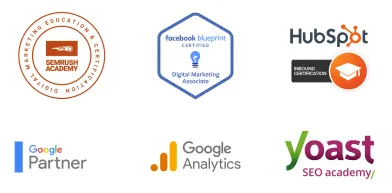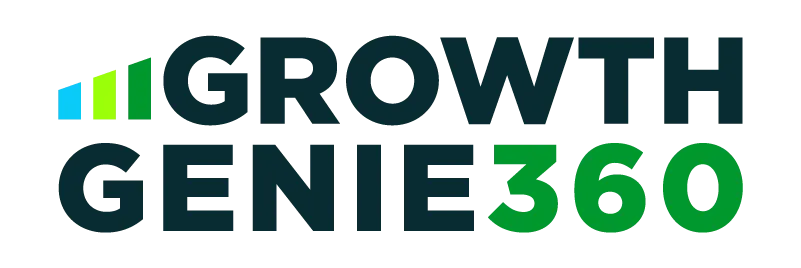THE COSMOS OF A POWERFUL STRATEGY
Growth-Driven Marketing
Let's find new and creative ways to reach your audience and achieve your marketing goals.

Marketing Is Our Specialty
Where Can We Help?
Marketing in today's world requires in-depth research, attention to detail, and skills that require updating on a daily basis to stay relevant. All of this adds up to time. We are here as your Digital Marketing Partner.



Diana Ulricksen, Owner
United Pest Control
LOJO Marketing has been excellent to us... we are very satisfied and we are so excited to work together. We highly recommend them. We know it works and we are excited to make our pest control "United Pest Control" business grow....!!!!"
Growing Businesses Since 2008
We have helped hundreds of businesses just like yours. Working for or along-side of business owner, managers, staff, or even board of directors, LOJO is ready to be an asset to your business.
Our team has been curated through the years for individual skills, personalities, and capabilities. Our clients put their trust in us to help them grow. We are here to do just that.



Growing Businesses Since 2008
We have helped hundreds of businesses just like yours. Working for or along-side of business owner, managers, staff, or even board of directors, LOJO is ready to be an asset to your business.
Our team has been curated through the years for individual skills, personalities, and capabilities. Our clients put their trust in us to help them grow. We are here to do just that.



LOJO Marketing is a GrowthGenie360 Platinum Partner
What does this mean for your business? Continued great service from the LOJO staff with the addition of an amazing website and marketing automation software to help your business grow!
All of our most popular plans combine our agency services with the power of GrowthGenie360. All prices displayed below include the total fee for both services. During sign-up, you’ll first need to sign up for our LOJO Marketing agency service and then proceed to the next step to sign up for the corresponding GrowthGenie360 plan. We keep things separate in the event you wish to take your marketing, websites, and branding service management elsewhere. You reserve the right to cancel one or both services as your business needs change.
Our Most Popular Marketing Plans
Starter
Get The Party Started
Kickstart your growing business with this plan designed for small businesses on the rise.
$2,197/Month
$1,831 PER MONTH
WHEN PAYING ANNUALLY
Cost Breakdown:
LOJO Monthly Service $1900
LOJO Setup Fee $1,600
GrowthGenie360 Monthly Service $297
GrowthGenie 360 Setup Fee $800
What's Included:
Starter Features
Assigned Marketing Strategist
Assigned Account Manager
SEO Marketing (18-25 Keywords)
On-Page/ Off-Page/ Technical
Paid Media Management Starter
(Google, Bing, Youtube)
Content Marketing Starter
Marketing Software Management
(CRM/ Workflows/ Email Marketing)
CRM/Marketing Automation Software
GrowthGenie360 Standard Plan
10,000 Contacts
10 Team Member Seats
$10 Monthly Credit
(For Average Usage Rates)
Onboarding & Setup Fee
$2,400
One-time onboarding includes setup, initial research, and S.M.A.R.T goal planning.
Premium
Growing In Strength
Feel the benefits of a full-service marketing team working to grow your business.
$4,097/Month
$3,415 PER MONTH
WHEN PAYING ANNUALLY
Cost Breakdown:
LOJO Monthly Service $3,600
LOJO Setup Fee $2,400
GrowthGenie360 Monthly Service $497
GrowthGenie 360 Setup Fee $1,200
What's Included:
All Features From Starter Plan
Additional Upgrades With Premium
Assigned Content Writer
Assigned Graphic Designer
Paid Media Management Premium
(Google, Bing, Youtube)
Social Marketing Optimization
(Organic Posts & Account Moderation)
Content Marketing Premium
CRM/Marketing Automation Software
GrowthGenie360 LOJO Unlimited Plan
Unlimited Contacts
Unlimited Team Member Seats
$20 Monthly Credit
(For Average Usage Rates)
Marketing Focused Website
Onboarding & Setup Fee
$3,600
One-time onboarding includes setup, initial research, and S.M.A.R.T goal planning.
Elite
Lengthen Your Stride
A plan that encompasses all areas of marketing with an expert team to carry out the execution.
$7,397/Month
$6,165 PER MONTH
WHEN PAYING ANNUALLY
Cost Breakdown:
LOJO Monthly Service $6,900
LOJO Setup Fee $6,300
GrowthGenie360 Monthly Service $497
GrowthGenie 360 Setup Fee $1,200
What's Included:
All Features From Premium Plan
Additional Upgrades With Elite
SEO Marketing Elite (40-50 Keywords)
On-Page/ Off-Page/ Technical
Paid Media Management Elite
(Google, Bing, Youtube)
Social Media Marketing
(Social Ads: FB, IG, LinkedIn)Social Marketing Optimization Plus
(Organic Posts & Account Moderation)
Content Marketing Elite
Onboarding & Setup Fee
$7,500
One-time onboarding includes setup, initial research, and S.M.A.R.T goal planning.
Custom Made Plans Are Available

Julee Hight Patterson, Owner
Gateway Properties
I have only amazing things to say about everyone I have dealt with at LOJO. Honest professionals, doing a fantastic job."
Most Popular Marketing Plans
Starter
Get The Party Started
Kickstart your growing business with this plan designed for small businesses on the rise.
$2,197/Month
$1,831 PER MONTH
WHEN PAYING ANNUALLY
Cost Breakdown:
LOJO Monthly Service $1900
LOJO Setup Fee $1,600
GrowthGenie360 Monthly Service $297
GrowthGenie 360 Setup Fee $800
What's Included:
Starter Features
Assigned Marketing Strategist
Assigned Account Manager
SEO Marketing (18-25 Keywords)
On-Page/ Off-Page/ Technical
Paid Media Management Starter
(Google, Bing, Youtube)
Content Marketing Starter
Marketing Software Management
(CRM/ Workflows/ Email Marketing)
CRM/Marketing Automation Software
GrowthGenie360 Standard Plan
5,000 Contacts
10 Team Member Seats
$10 Monthly Credit
(For Average Usage Rates)
Onboarding & Setup Fee
$2,400
One-time onboarding includes setup, initial research, and S.M.A.R.T goal planning.
Premium
Growing In Strength
Feel the benefits of a full-service marketing team working to grow your business.
$4,097/Month
$3,415 PER MONTH
WHEN PAYING ANNUALLY
Cost Breakdown:
LOJO Monthly Service $3,600
LOJO Setup Fee $2,400
GrowthGenie360 Monthly Service $497
GrowthGenie 360 Setup Fee $1,200
What's Included:
All Features From Starter Plan
Additional Upgrades With Premium
Assigned Content Writer
Assigned Graphic Designer
Paid Media Management Premium
(Google, Bing, Youtube)
Social Marketing Optimization
(Organic Posts & Account Moderation)
Content Marketing Premium
CRM/Marketing Automation Software
GrowthGenie360 LOJO Unlimited Plan
Unlimited Contacts
Unlimited Team Member Seats
$20 Monthly Credit
(For Average Usage Rates)
Marketing Focused Website
Onboarding & Setup Fee
$3,600
One-time onboarding includes setup, initial research, and S.M.A.R.T goal planning.
Elite
Lengthen Your Stride
A plan that encompasses all areas of marketing with an expert team to carry out the execution.
$7,397/Month
$6,165 PER MONTH
WHEN PAYING ANNUALLY
Cost Breakdown:
LOJO Monthly Service $6,900
LOJO Setup Fee $6,300
GrowthGenie360 Monthly Service $497
GrowthGenie 360 Setup Fee $1,200
What's Included:
All Features From Premium Plan
Additional Upgrades With Elite
SEO Marketing Elite (40-50 Keywords)
On-Page/ Off-Page/ Technical
Paid Media Management Elite
(Google, Bing, Youtube)
Social Media Marketing
(Social Ads: FB, IG, LinkedIn)Social Marketing Optimization Plus
(Organic Posts & Account Moderation)
Content Marketing Elite
Onboarding & Setup Fee
$7,500
One-time onboarding includes setup, initial research, and S.M.A.R.T goal planning.
Custom Plans Available
I have only amazing things to say about everyone I have dealt with at LOJO. Honest professionals, doing a fantastic job."

Julee Hight Patterson, Owner
Gateway Properties


